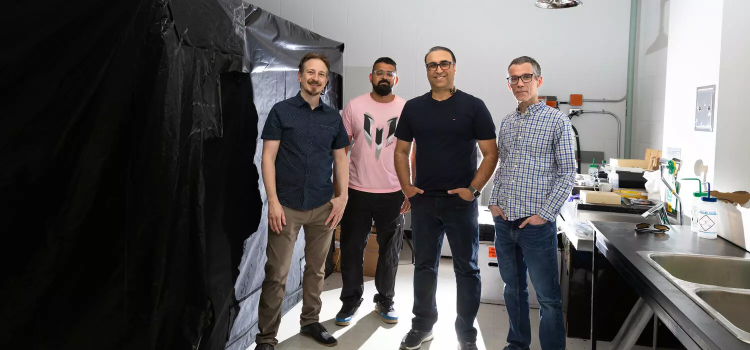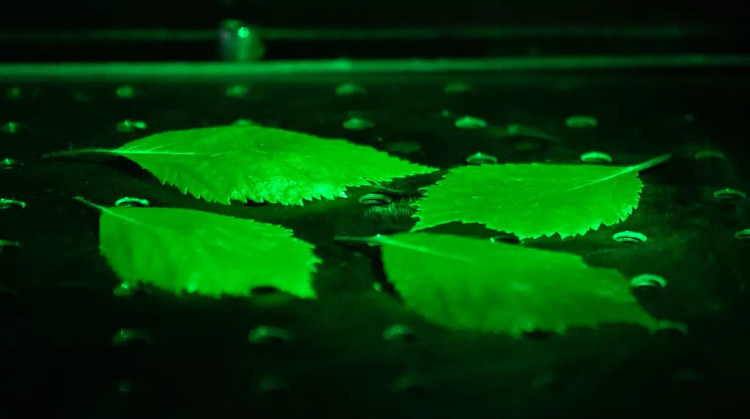A study by University of Calgary researchers shows all living things emit an ultraweak photon emission - or eerie glow - that seems to vanish as soon as we die.
The paper was published in the Journal of Physical Chemistry in April.

From left: Daniel Oblak, Vishnu Seshan, Vahid Salari and Christoph Simon. Photo Credit: Riley Brandt, University of Calgary
It went viral within weeks of its publication and has now had more than 200 news stories written about its findings.
Study calls to mind auras
The scientists say they were somewhat surprised by the intense interest.
"I suppose it has a little to do with people being reminded of auras," says Dr. Christoph Simon, PhD, one of the authors of the study and a professor in the Department of Physics and Astronomy in the Faculty of Science. "It is a fact that living beings glow. It's a very weak glow, but it's there and visible with very sensitive cameras."
The paper took it a step further by showing what happens to the glow, known as biophotons, by imaging it across mice before and after their deaths.
Dr. Daniel Oblak, PhD, an associate professor in Physics and Astronomy who is the corresponding author on the paper, says there have long been indications that living things, including plants and animals, give off the ultraweak photo emission.
"It's a very small amount and it's, of course, very tricky to detect," he says.
The phenomenon was brought to Oblak's attention by Simon, who's interested in quantum biology, and they put their heads together.
"Since I work as a quantum physicist on light detection for quantum communication, I thought that experimentally we have a lot of the tools to be able to detect the light," Oblak explains.

Daniel Oblak is the corresponding author on a new research paper. It found that living things produce a faint glow until we die. Oblak points out that this is a physical phenomenon called ultraweak photon emission, or UPE. Photo Credit: Riley Brandt, University of Calgary
Insights into the biochemical and metabolic processes of living things
This research has the potential to provide non-invasive insights into the biochemical and metabolic processes of living things. It could be used as an indicator of stress and health abnormalities, making ultraweak photon emissions a promising tool for advancing our understanding of both biology and biomedical research.
The UCalgary team collaborated with the Human Health Therapeutics Research Centre at the National Research Council of Canada (NRC) in Ottawa to explore the phenomenon in mice through imaging.
"We saw that the level of light that they emit - this biophoton glow - is distinctly different between living and dead animals," says Oblak.
The researchers used digital cameras that could detect single photons to create two hour-long exposure images of mice before and after death. It showed that the biophoton emission decreased after death across the entire mouse.
Oblak says that the glow, which is not visible by the human eye, is a biochemical phenomenon rather than a metaphysical one.
"We must understand what that is to figure out what's happening," he says. "If we can understand how that relates to certain influences on the body - stress, diseases - then that could be used as a diagnostic tool."
Emissions can indicate tissue damage
As an example, he says it shows the possibility of ultra-weak photon emission to indicate whether tissue is damaged or alive.
The team's three-year project through the NRC's Quantum Sensing Challenge Program provided state-of-the-art imaging for the UCalgary scientists to yield promising results.
It also reinforces the three pillars of Canada's National Quantum Strategy: supporting research, developing talent and translating research into scalable, commercial products and services that can benefit Canadians, our industries and the world.










